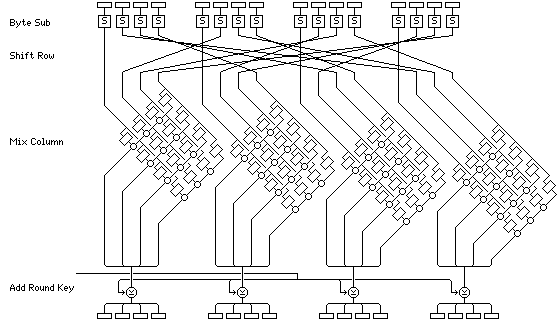
AES
In cryptography, the Advanced Encryption Standard (AES), also known as Rijndael, is a block cipher adopted as an encryption standard by the U.S. government. It has been analyzed extensively and is now used widely worldwide as was the case with its predecessor, the Data Encryption Standard (DES). AES was announced by National Institute of Standards and Technology (NIST) as U.S. FIPS PUB 197 (FIPS 197) on November 26, 2001 after a 5-year standardization process (see Advanced Encryption Standard process for more details). It became effective as a standard May 26, 2002. As of 2006, AES is one of the most popular algorithms used in symmetric key cryptography. It is available by choice in many different encryption packages.
The cipher was developed by two Belgian cryptographers, Joan Daemen and Vincent Rijmen, and submitted to the AES selection process under the name "Rijndael", a portmanteau of the names of the inventors.
As of 2006, the only successful attacks against AES have been side channel attacks. The National Security Agency (NSA) reviewed all the AES finalists, including Rijndael, and stated that all of them were secure enough for US Government non-classified data. In June 2003, the US Government announced that AES may be used for classified information:
"The design and strength of all key lengths of the AES algorithm (i.e., 128, 192 and 256) are sufficient to protect classified information up to the SECRET level. TOP SECRET information will require use of either the 192 or 256 key lengths. The implementation of AES in products intended to protect national security systems and/or information must be reviewed and certified by NSA prior to their acquisition and use."
This marks the first time that the public has had access to a cipher approved by NSA for encryption of TOP SECRET information. Many public products use 128-bit secret keys by default; it is possible that NSA suspects a fundamental weakness in keys this short, or they may simply prefer a safety margin for top secret documents (which may require security decades into the future).
Hiç yorum yok:
Yorum Gönder